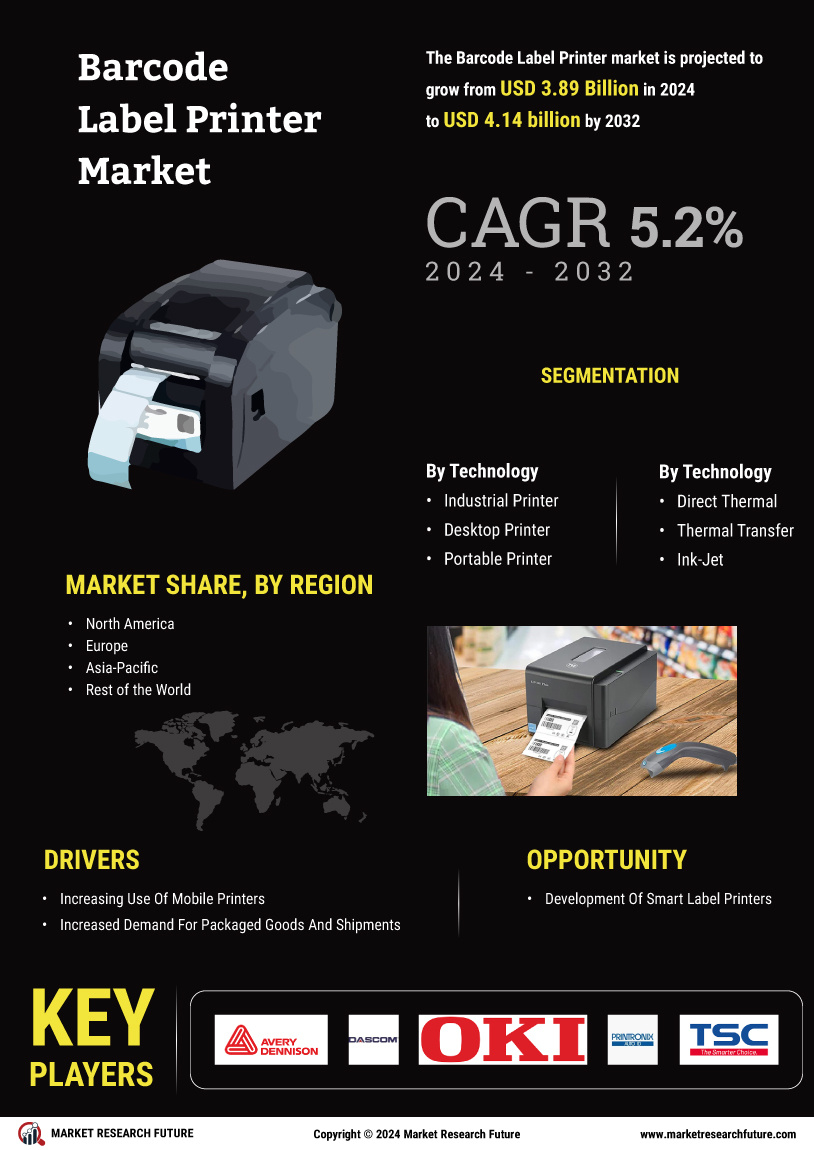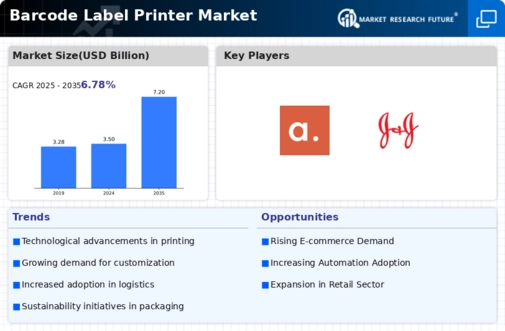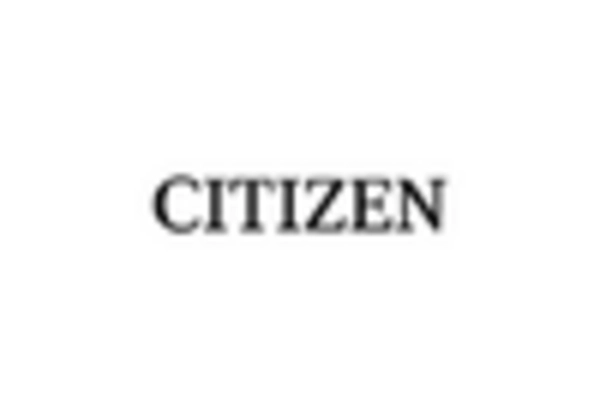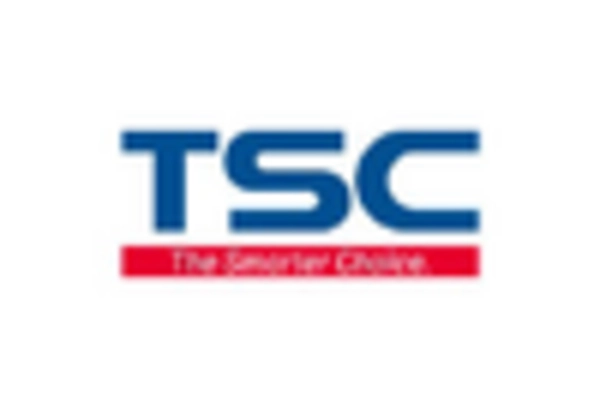In September 2024, DNP inaugurated two types of new thermal transfer ink ribbons around the globe in September 2024. With respect to the printing of barcodes and 2D codes on tags and labels, R380 is said to be more resistant to alcohol. The V670, on the other hand, has proven to supersede all in the printing of food packaging materials, plastic and paper for date and production number applications.
In April 2023, Barcodes, Inc. entered into a strategic partnership with SVT Robotics to facilitate the rollout of its new AMR portfolio in warehouses and manufacturing sites. The objective of this partnership is to make the deployment of automation and robotics integration less complex and less time-consuming for quicker return on investment (ROI) and less dependency on manpower. SVT Robotics' low-code interface allows the fast adoption of different robots and automation elements.
In April 2023, Toshiba released the BC400P industrial colour label printer. The combination of high printing speed, high quality, and great durability made the product a perfect fit for customers who wished to make their color labels on demand. Toshiba is seasoned in printing, having spent over 20 years providing color solutions for their workspace solutions clientele and now brings this knowledge and experience to industrial labeling clients.
In June 2022, TSC Auto ID Technology Co. Ltd. debuted its Alpha-30R 3-inch performance mobile barcode label printer. This printer is offered in a basic as well as a premium version and is characterized by a rugged design, adequate media capacity, and an IP54 rating for water and dust protection. Specifically, the basic model is able to print at rates of up to 5 ips, while the premium model can print at rates of up to 6 ips, and this makes it versatile for different styles of receipt and label printing, whether for indoor or outdoor applications.
In 2021, brought the launch of the ZSB Series printer by Zebra Technologies Corporation which was the answer for the compact wireless label printer targeting SOHO markets. The ZSB Series's user-friendly interface, professional-looking label designer, environmental-friendly label cartridges, and app software allow users to seamlessly tailor transparent barcode labels and print them, thereby simplifying the daily operations of small entrepreneurs and business owners.
December 2021: Honeywell launched its IMPACT series of barcode printers under the "Make in India" initiative. The four-inch desktop barcode printer is built for light-duty label printing requirements, and it supports thermal transfer/direct thermal printing, thereby enabling printing at 127mm/sec. IMPACT by Honeywell is a brand established specifically to cater to the growing mid-segment market in India.
March 2021: Brother Mobile Solutions announced the expansion of the Brother Titan Industrial Printer series with five enhanced four-inch industrial barcode label printers featuring internal rewinders for an increased use range. Built with metal, the portfolio includes an increased ribbon capacity, dual Wi-Fi/Bluetooth option, and PLC integration. The augmented range delivers clear barcode labels up to 600 dpi1 at speeds nearing 14 ips2.

















Leave a Comment